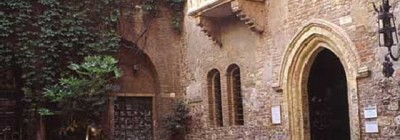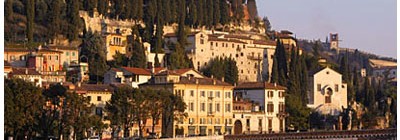VERONA
Verona is the second largest city in Veneto and the third of North-Eastern Italy. It is one of the main tourist destinations due to its artistic heritage, several annual fairs, shows and operas, such as the lyrical season in the Arena, the ancient amphitheatre built by the Romans.
The city has been awarded world heritage site status by UNESCO because of its urban structure and architecture.
You can reach Verona from Vicenza in 45 minutes from the train station which is not far from our school.
What to see:
THE ARENA
The Arena of Verona is one of the best conserved Roman amphitheaters and it is still used today for Opera performances and modern music concerts.
Arena lies in the city’s largest piazza, the Piazza Bra. Completed around 30 AD, it is the third largest in Italy after Rome’s Colosseum and the arena at Capua.
Walking through the ancient corridors you are overwhelmed by the sheer size of the structure. With 44 levels, the arena has a current capacity of about 15,000 patrons.
JULIET’S HOUSE
It is supposed to be the location of the famous balcony love scene from Shakespeare’s Romeo and Juliet. The house is a major destination for tourist pilgrimage.
The balcony overlooks a tiny courtyard containing a statue of Juliet. There is an unbelievable amount of graffiti and general scrawling on the walls, floor, seats, anything that will hold ink: there is a tradition of writing love messages to Juliet, and visitors leave notes on the walls.
PIAZZA DELLE ERBE
In the days of the Roman empire, the area where Piazza delle Erbe now stands was a popular marketplace and was of great social importance. One could say that things haven’t changed all that much over the years because it is still possible to buy fresh fruits and vegetables.
The northern side of the square is occupied by the ancient town hall, the Torre dei Lamberti, the Casa dei Giudici (“Judges Hall”) and the Mazzanti Houses. The western side, the shortest one, features the Baroque Palazzo Maffei, decorated by statues of Greek gods. It is faced by a white marble column, on which is St. Mark’s Lion, symbol of the Republic of Venice.
The north-western side occupies the site of the ancient Roman Capitol Hill, which looked towards the Forum. On the southern side is the Casa dei Mercanti (“House of the Merchants”, also known as Domus Mercatorum), now the seat of the Banca Popolare di Verona. Other buildings are reminiscent of medieval tower-houses.
The square’s most ancient monument is the fountain, surmounted by a statue called Madonna Verona, which is however a Roman sculpture dating to 380 AD. Also historical is the capitello, dating to the 13th century, during which it was used for several ceremonies.




















